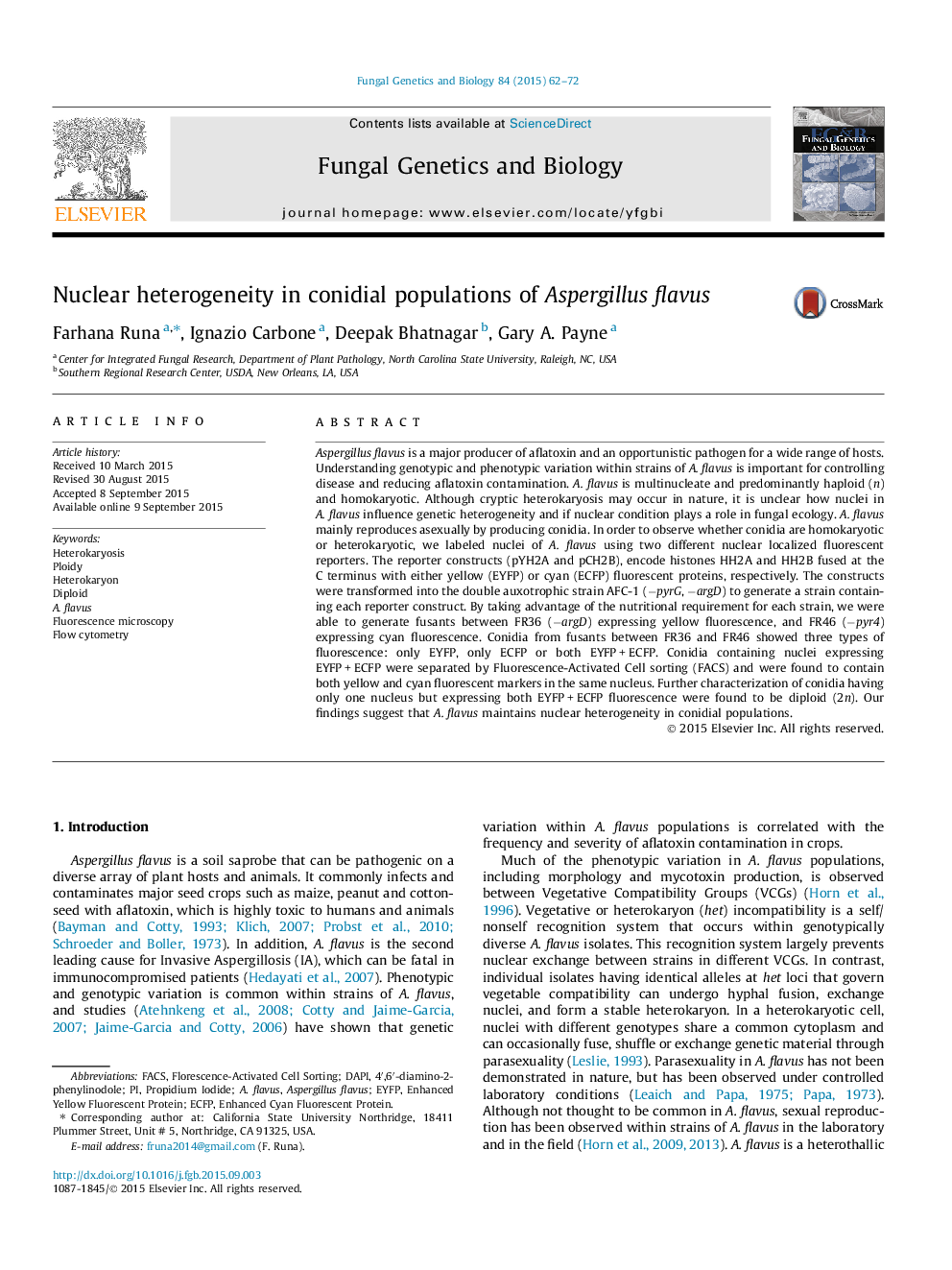| کد مقاله | کد نشریه | سال انتشار | مقاله انگلیسی | نسخه تمام متن |
|---|---|---|---|---|
| 2180685 | 1550007 | 2015 | 11 صفحه PDF | دانلود رایگان |

• Conidia of Aspergillus flavus have predominately one or two nuclei.
• The majority of conidia of A. flavus are homokaryotic.
• Conidia of A. flavus can harbor heterokaryons or diploid nuclei.
• Strains of A. flavus in which nuclei are tagged with EYFP and ECFP, are stable.
• FACS is a powerful tool to detect and sort homo- and heterokaryotic conidia.
Aspergillus flavus is a major producer of aflatoxin and an opportunistic pathogen for a wide range of hosts. Understanding genotypic and phenotypic variation within strains of A. flavus is important for controlling disease and reducing aflatoxin contamination. A. flavus is multinucleate and predominantly haploid (n) and homokaryotic. Although cryptic heterokaryosis may occur in nature, it is unclear how nuclei in A. flavus influence genetic heterogeneity and if nuclear condition plays a role in fungal ecology. A. flavus mainly reproduces asexually by producing conidia. In order to observe whether conidia are homokaryotic or heterokaryotic, we labeled nuclei of A. flavus using two different nuclear localized fluorescent reporters. The reporter constructs (pYH2A and pCH2B), encode histones HH2A and HH2B fused at the C terminus with either yellow (EYFP) or cyan (ECFP) fluorescent proteins, respectively. The constructs were transformed into the double auxotrophic strain AFC-1 (−pyrG, −argD) to generate a strain containing each reporter construct. By taking advantage of the nutritional requirement for each strain, we were able to generate fusants between FR36 (−argD) expressing yellow fluorescence, and FR46 (−pyr4) expressing cyan fluorescence. Conidia from fusants between FR36 and FR46 showed three types of fluorescence: only EYFP, only ECFP or both EYFP + ECFP. Conidia containing nuclei expressing EYFP + ECFP were separated by Fluorescence-Activated Cell sorting (FACS) and were found to contain both yellow and cyan fluorescent markers in the same nucleus. Further characterization of conidia having only one nucleus but expressing both EYFP + ECFP fluorescence were found to be diploid (2n). Our findings suggest that A. flavus maintains nuclear heterogeneity in conidial populations.
Journal: Fungal Genetics and Biology - Volume 84, November 2015, Pages 62–72